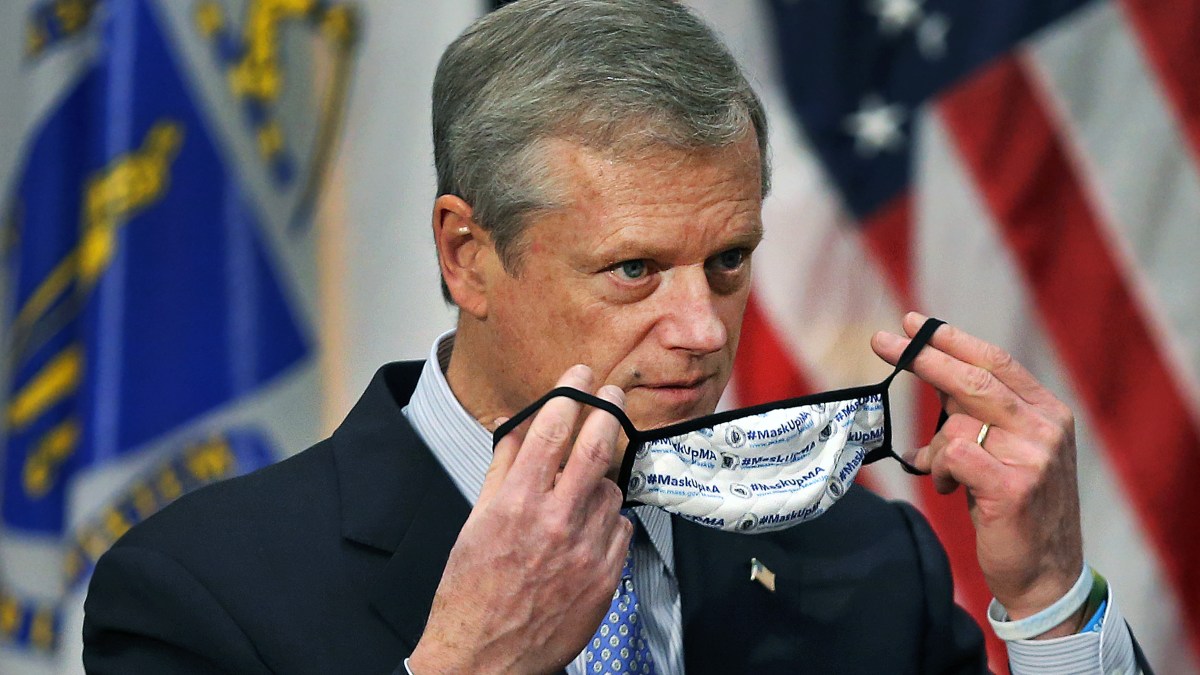
As the Christmas celebrations come to an end and preparations for New Year’s Eve begin, new restrictions are in place in Massachusetts that aim to curb another spike in holiday-related COVID-19 cases.
According to Dr. Ashish Jha, Dean of the Brown University School of Public Health, are very concerned that it will happen again after the end of year period.
“I am very concerned that in the coming weeks we will see a big new wave on top of a wave of new infections,” he told NBC10 Boston.
Download our free mobile app for iOS or Android for the latest news and extensive coverage on COVID-19.
But when was the evidence of that wave likely to appear? Thanksgiving, which inspired the new restrictions, may offer an idea.
“There’s no question that the informal meetings that took place … around Thanksgiving had a major impact on our test numbers and a major impact on our hospital admissions,” said Massachusetts Governor Charlie Baker at a news conference a week before Christmas. “Thanksgiving brought us back.”
A rise in cases followed the Massachusetts holiday – despite a reported drop in travel around Thanksgiving compared to a normal year. Just not right away.
In the first days after Thursday, November 26, the number of cases remained relatively unchanged. On Nov. 27, the day after Thanksgiving, Massachusetts had an average of about 2,400 new confirmed cases of the coronavirus per day, according to figures from the Massachusetts Department of Public Health.
Medical experts across the country and here in Massachusetts are increasingly concerned that we will soon see a spike in COVID cases after Thanksgiving, creating a wave within a wave.
The increase occurred the following week when the daily mean number of cases rose dramatically. As of Monday, November 30, newly reported cases rose 10% or more for four consecutive days, culminating in a 20% jump from December 2 to December 3. By December 4, the average number of cases reported each day had reached 4,300, nearly double the number reported the day after Thanksgiving.
The mean positivity rate from the COVID-19 test in the state, meanwhile, started to rise even earlier. After staying at levels between 3% and 3.3% two weeks before Thanksgiving, the number had started to rise as early as November 24. But 10 days later, on December 4, the average rate reached 6% for the first time since June 1. .
Baker urged Bay Staters to skip the holidays, saying earlier this month that “we really can’t think they are the kind of consistent event that Thanksgiving has had in Massachusetts.”
And the governor sparked the post-Thanksgiving wave when he announced the new rules on Tuesday.
He said that seven days after Thanksgiving, “we saw a big bump in positive cases.” Hospital acute care beds went from 67% occupied around the holidays to a peak of 83% occupied on December 15, about three weeks after Thanksgiving.
Gov. Charlie Baker is announcing new restrictions on mass residents to prevent another coronavirus outbreak, including reducing capacity for most industries to 25% and reducing indoor gatherings to a maximum of 10 people.
The new rules, which started on Saturday and will last for at least two weeks, cut occupancy rates to 25% for a variety of businesses, including restaurants, places of worship, fitness centers and retail stores.
Indoor gatherings and events are limited to just 10 people, while outdoor gatherings and events should not exceed 25 people. Employees and staff are not counted towards event occupancy, but the limits apply to private residences as well as event venues and public areas.
Baker had waited for this round of restrictions to begin until after Christmas to allow religious celebrations, including many Christians, to physically attend traditional Mass. He hoped people would continue to celebrate safely, he said.
If a peak after Christmas is similar to that after Thanksgiving, a surge in the number of cases could start on Monday or Tuesday.
Gov. Charlie Baker hinted that further restrictions would come to minimize the impact of another major wave as he advocated a Christmas week for residents begging them to stay home during the holidays.
But old and new is also part of the equation, as the new restrictions also target that holiday and the week between it and Christmas, when many schools don’t sit and families traditionally visit each other, Baker said.
Jha said he expects the increase to be evident from January 4 or 5, a few days after the week of celebration ends. He said it can take five to seven days for peaks to become visible.
“It takes a while for people to get infected, develop symptoms, get tested and report that data,” Jha said.
It’s possible no new wave is arriving in Massachusetts, but travel suggests that people visited family and friends over the holidays, despite warnings from experts and officials.
Although airports seemed emptier than normal during the holidays, many people continued to travel despite advice.
Lines could be seen Monday morning at the counters at Boston Logan International Airport, which have greatly reduced traffic due to the pandemic, and the U.S. Transportation Security Administration reported that 1.3 million people passed through checkpoints on Sunday, the most in one day since March.
“What it tells me is that a lot of people are getting tired of staying at home, and I understand that,” Jha said, adding, “The problem is that we are in the middle of the worst phase of the pandemic.”